Which lens to buy, or not
I think one of the most asked gear questions I get is which lens to buy.
Let’s first make one thing clear, I love that people mail me questions and I always answer them (and will continue doing that of course), some of those questions however trigger me into writing a blog post about them, and without a doubt this is one of them.
The message
Before we can look at what gear to buy I think it’s very important to realize what you are doing with your gear, for me it’s very simple, I like to tell a story, move my viewer or just enjoy them with a nice image. Realizing this can probably already safe you some money, but let’s start at the beginning.
The stages of a photographer
Please do read this as a it’s intended and that’s with a lot of tongue in cheek, so don’t be offended.
When I explain stuff to my students I sometimes use the following stages of a photographer.
Stage 1 : I’m the most awesome photographer in the world, every shot I take is the best ever.
Stage 2 : I’m doing just fine, I improve and I’m having fun, and people seem to enjoy my work.
Stage 3 : Man I suck, I think I’m just gonna quiet and start something else.
Stage 4 : Now if I get that new lens I will get better images, or that body, or……
Stage 5 : You know what…. forget about gear it’s about telling the story
In between these stages there are a lot of “substages” but the message I would like to get to you is that in the end it all boils down to one thing, and one thing only and that’s telling YOUR story and move your audience. I will never claim that a better lens is throwing away money, however I do want to say “be cautious”. Over time for example you see the bigger brands re-releasing lenses with catching advertising like “now even sharper, more contrast, more…..” etc. and although this can all be true you have to realize that, especially in the higher segment, you are paying a lot of money for something you already own.
Let’s take an example, a while ago Canon released a new version of my favorite lens the 70-200 f2.8 IS L, and although of course I’m curious I will not buy the new version. First off I would have to pay a lot of money for the upgrade, second of all the old 70-200 f2.8 IS L is already razor-sharp has great contrast and is in my possession, I will not say the new one isn’t better, however will I see a difference in my prints, on my website or in the publication I shoot with it for my customer ? The answer is very simple NO.
And this is just one example, however this does not mean I will never upgrade a lens. I strongly believe that if you can lift some limitations from your gear that you experience as a draw back it’s always wise to upgrade. For example I love to shoot sports in my spare time, at the moment I use the Canon 100-400L IS for that and although I really like the lens I would probably buy it’s replacement, the lens is a bit soft wide open, it’s not the fastest kid on the block and I feel it lacks some overall rendition that the 70-200 does have, not to a point that it annoys me, but certainly to a point that I think that if it’s replaced by something that’s affordable and a bit faster I will do the upgrade, however reality also kicks in that if I would have to pay more than let’s say 1500.00 for an upgrade I would realize it’s just my fun lens and would pass on it. Because as with all you guys I can only spend my money once.
So what lens do I buy?
Because a lens will determine the look of the image I strongly believe it’s very important to cover the range you need. For model/fashion/glamour photography this means I always advise to cover at least the range 24-200 meaning for the canon system I will advise the 24-70 and 70-200 lenses, and the fastest you can afford. The reason for fast glass is sometimes overlooked but very important. What you have to realize is that when we shoot in a studio environment we almost always close down, this means that some people think we would only need a f4 lens because closed down it still performs very well (even wide open by the way), however what’s often forgotten is that the Auto Focus system of your camera works with light, the more it gets in the better it will perform, and in the studio there’s not a lot of light, in most cases we don’t run with the modeling lights on full power and in 90% of the cases the light is also hitting our model under an angle, this is a situation that is not Auto Focus friendly to put it mildly, so getting a f2.8 lens is always a good idea instead of the f4.
Now I do break this rule myself just a little bit. I do cover my range but I choose the Canon 24-105 f4 L IS lens instead of the 24-70 f2.8L and the reason for this is actually very simple, I love to do video and the 24-105 has IS and this really helps a lot to smooth out the video, plus the longer range makes it a great walk around lens when I’m doing street style shooting. In the studio it’s slightly slower than the 2.8 version (which doesn’t have the longer range and IS) but to be 100% honest in the studio I mostly use the 70-200 when I shoot with Canon (normally I shoot Medium Format in the studio).
Primes vs zoom
Same story here to be honest.
Some people will claim that primes is the only way to go, and although they are in most cases 100% right that the primes are sharper, have some more contrast etc. but as you might have guessed I don’t advise primes to most people. I do own the 50mm 1.4 because I love the light capturing qualities of that lens, but when I shoot with primes I feel myself moving around to much to get the shot I want and that way loosing the compositional ideas I have. When I use a zoom I can very quickly change from 3/4 to full body or portraits, but MORE importantly I can change my angle of view very quickly, for example you can shoot a 3/4 shot on 70mm and on 150mm, both will give you the same area of the model BUT both will show you a different surrounding area, on 150mm you can for example make sure the ugly power outlet at the side of the scene is not in the image, whilst with the 70mm you can make sure that that beautiful lamp on the side of the image is seen. In other words both lengths will give you another rendition of the scene showing more or less of the scene.
This option and the increased speed in working gives me the flexibility I need in my shoots, and let’s be honest in the end result I will not see much or no difference between a very good zoom or a very good prime. And please don’t overwhelm me with mails with reviews, graphics etc. I know there is can be a huge difference in those tests, but just make some real live shots, print them out on A3 (full double page spread) and see if you can really spot a difference that is huge. And do take into account that you are limiting yourself in telling your story, or slowing down the workflow because you have to change lenses constantly, plus the added impact on your budget that could have been spend on improving your skills with workshops, DVDs, getting better models, nice locations etc.
Conclusion
In my heart I’m still a technical kind of guy, I love new gear, I love progress, and man do I love sharp images. However above all I love to tell a story without thinking about which lens will render a slightly sharper image but limiting my view, versus getting the view I want but having a little bit less sharpness, which will probably disappear when I print out my work…….. I always say “In the end we want the nail to go into the wall, I don’t care if I do that with a hammer from brand X or brand Y as long as it goes in and quick”. Well that might be a bit simple but in the end I think it does say what I mean.
Don’t see this article as a reason to buy cheap lenses (although the can be fun), invest in good glass, invest in fast glass but don’t over invest. A good lens is priceless and the difference between most $150.00 lenses and $1000.00 lenses are clearly seen in bokeh, sharpness, color rendition, overall corner to corner sharpness and distortion but please keep it “real” and don’t overspend on your glass forgetting where it really boils down to…. telling that story, getting the vision you have in your head onto the sensor.
Feel free to ask questions and share this article via social media

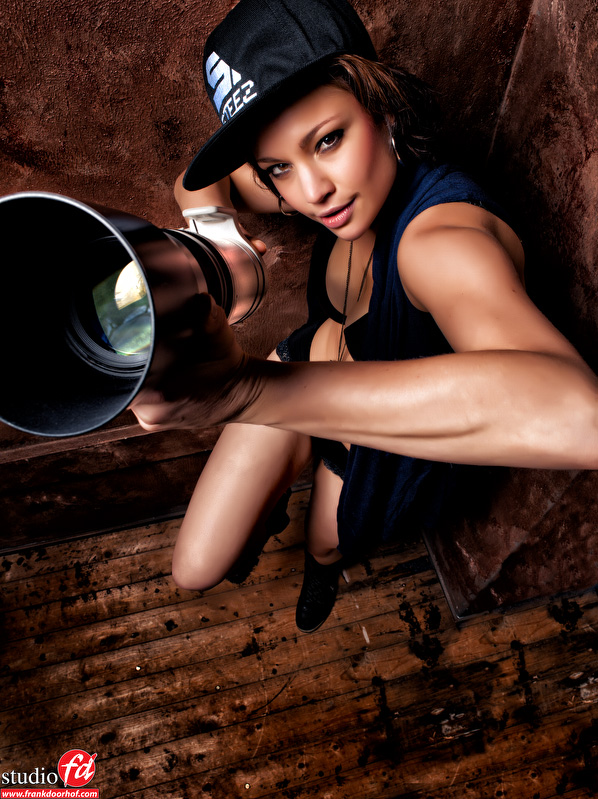
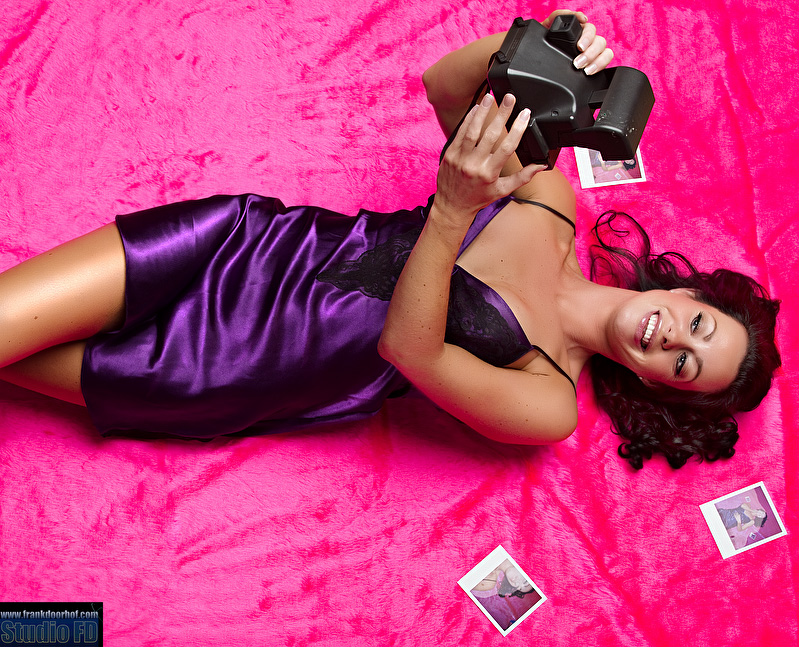
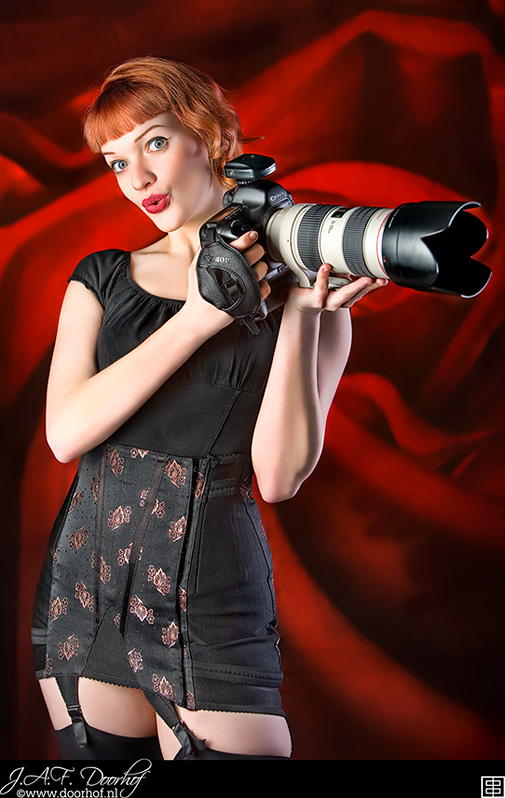
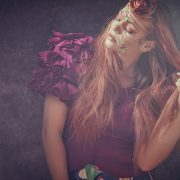
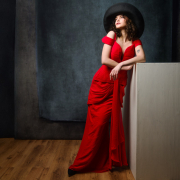

Cool post, as with your other stuff; very helpful!
I went for a very safe kit within a reasonable budget myself, bought the Canon 17-40mm f/4L USM, a 24-105mm f/4L IS USM and the 100-400mm f/4.5-5.6L IS USM. I have a broad, allround range to work with now and fairly good glass. Very happy to work with these and in the (near) future, I’m planning to add the 1st 70-200 f2.8 IS L (your videos got me interested in Studio work a lot!)
And sure, the 85mm f/1.2L II USM would be awesome too, but I guess I rather get a subscription on NAPP and Kelbytraining to increase technique and skills and have money left to take my girlfriend out for a nice dinner hehe
A Kelbytraining subscription is always a good idea 😀
The 70-200 f2.8 is without a doubt my fav lens on the Canon.
Typo.. Man I suck, I think I’m just gonna (quiet) and start something else. should read quit … 🙂
great post Frank ! informative.
Riker.
Why ?
It’s just here to motivate and help 😀
Ha I always recommend the 50mm 1.4 to all my students. Really in the end I always ask them “what do you want to shoot?” If they tell me over all whatever I always say get the 18-200mm but that starts at 4 I believe. Not very fast. It just covers so much though. It’s great for many circumstances but I always end up back with the 50mm 1.4.
the 50mm is great without a doubt. both the 1.4 and 1.8 both for different reasons.
I love the 1.4 for its quality and DOF, but the 1.8 is so cheap and good it’s also a great buy and almost must buy.
Would you say that the 70-200L IS Lens is worth the extra money over the 70-200L non IS version for studio shooting Frank, given that you can almost buy the 24-70 and the 70-200 non IS for the cost of the IS version?
I would certainly go for the version WITH IS. The lens is quite heavy (1.5 kg) and will easily move wile working with it. Then IS is worth your every penny, also because it works very good. And when you own this lens you won’t be using it only in the studio, you will want to use it any-ware, also in dimmed light situations like theaters and so on, and then you can’t do without it.
I have 3 primes, I’ve never really used zooms so I’m a bit blind to the advantages of zooms but the great thing about primes is the fact that it forces me to move. Often into more creative angles. Sometimes it forces me backwards and I happen upon something behind me to frame the shot or I have to move tighter and go around something and suddenly I spot a bit of light I hadn’t noticed.
As I said I’ve not used zooms and in the studio it will clearly have benefits, less tripping over wires. But on location and at weddings etc they are awesome! Bit of an arse swapping lenses though! But the sharpness and the bokeh!!! Swings and round abouts!!
I have 35mm 1.4, 50mm 1.8 and 100mm 2.8
I agree with Bokeh without a doubt.
But as you mentioned it forces you to move, and with this it changes the field of view, with a zoom you can be even more creative by changing the field of view with the same subject placement 😀
Do remember however that this blog post is not a matter of “this is the truth” it’s something to make people think, and people are often forced into thinking that something is the only way to go, while in reality there are many options, some are indeed better but sometimes also limiting in budget or creativity.
There is actually no good or wrong.
I agree and I was just jumping in and giving the prime perspective. As I have a tendency to be a bit lazy the primes force me to move which I like. But I totally agree about the field of view – that must be awesome. As you say the story is the important thing.
I think this is how it goes for me,
Section one, equipment
%15 Camera
%15 Lens (Sharp and fast)
%15 Lights (Flash, strobe, sun etc.)
Section two, people and environment
%25 Props (people, models, environment)
%35 Photographer (Perspective, crop, posing, story, post process etc.)
I go sport candid shooting often. When I go with my 50mm lens or 65mm lens both F1.8, I look like an amateur next to the guy who has those 70-200 f2.8 lenses, monopods, big flashes… but results, I am one of the best sport shooter in my work. I do move around a lot, since they are High School games I am allow to. Set my camera highest ISO possible (usually indoors or night games) and fastest shutter speed possible and freeze the moment with full body in view. Not crazy about closeups.
If I shoot football games that I am not allow to move around freely, 70-200 or 300 with F2.8 probably the best lens to get (VR or not, a monopod helps to stable things)
For studio (or everyday shooting), anything between 18mm to 70mm (zoom or prime) that will give me sharp images without breaking the bank would do just fine. Maybe up to 105mm but I don’t see any need more than that.
I never had fullframe camera, so all those lenses are cropping, I still get good results the way I want to.
Calculation was wrong, so I take %5 from prop, so props only $20 of the whole thing for me. I keep the photographer $35, which actually is a good number. Some people probably gives more credit to photographer, or less…
Great article. I shoot with a Nikon D300. I have a Nikon 24-70 f/2.8 and a Sigma 70-200 f/2.8 non IS. I also have a Nikon 70-300 VR. I’m having trouble justifying selling both the 70-200 and 70-300 to buy a Nikon 70-200 VR which cost $2400 dollars. Neither of these 2 tele’s give me the result I want inside. Outside I love them both. Any thoughts?
Thanks
Overlapping lenses are often not a good thing budget wise, so I would sell them and get the better version with maybe an added 1.4 convertor.
LOL, love your five stages. Although, I went through gear acquisition at stage 2. Now I look at gear as, “well, I can’t afford it, so make what little I have work… I’ll be better for it in the end.” At least that’s what I tell myself. I currently have a Nikon 18-105 f/3.5+, a Tamron 70-200 f/2.8, and a Nikon 50mm 1.8 for walkabouts on a d300s. I love these lenses and, at this point, I can’t see me needing anything more. Mind you, I am saving up to go full frame though. What I’d like to know is when does stage 3 end?
Cheers!
It can go on for years, and years and years, or never end.
Well said Frank. The only issue that I have about upgrading or buying new stuffs is that I just need to make sure that the money I am spending is not going to be wasted down the track! You are dead right about the potentials of a cheap equipment over a more expensive one where the price difference is at least around $1000 but how about the time when you are going to buy something and the price difference is so small or nothing at all! That is where I usually stuck to make sure I am getting the right equipment!
To be honest the post was more aimed at the fact that you don’t need for example the 70-200 MKII lens if you have a perfectly working MK1 lens.
I would never advise to buy a Sigma 70-200 from the lowest series compared to L glass.
But somehow people do have to realize that it’s not the gear but the shooter that tells the story, and if you have good gear don’t feel the need to upgrade without a good reason.
“The reason for fast glass is sometimes overlooked but very important.”
Amen to that, brother!
A couple of years ago I was doing some photographs of flower decorations (shot from a tripod, lights were two Canon 430’s) and I decided take the opportunity to do a small test of my lenses. I shot the same scene at f/11 with a Canon EF-S 18-55 f/3.5-5.6, a Canon EF 50 mm f/1.8 and a Canon EF 28-70 f/2.8 L USM and I was surprised how close sharpness and contrast were across the different lenses.
Sure, the 18-55 had a lot of help from the fact that the decorations were in the center of the image so the less than stellar border performance was not an issue, but overall the difference were in no way exceptional (on a Canon 30D, by the way).
So, earlier this year I was shooting a female model with a very similar setup (two Canon 430 in small softboxes, relatively dimly lit room, shooting handheld) and I thought I would try the 18-55 along the 28-70 (which is my main lens), just to see if the result would be the same again. I was shooting at f/8 so I was still in the sweet spot of both lenses and any soft corners would not be an issue.
I’ll probably receive a lot of heat for this, but I can honestly say that not one of the images shot with the 18-55 was usable in a size above 10×15 cm (4×6 inches). Initially they looked OK on the monitor (I shot tethered to a 15″ MacBook Pro) but as soon as I zoomed to 50% it was clear that the images were soft – not because the lens was unable to produce sharp images, but because the AF could not cope with the dim lights and was slightly off.
Granted, the fact that I don’t use the center AF point and recompose does not help since the border AF points on a Canon 30D are only sensitive to contrast in one direction (only the center point is cross-type), but I’m pretty sure that regardless of how I did this, the result would have been similar: The difference in the amount of light between f/2.8 and f/5.6 made all the difference to the AF-system.
So, yes – the use of fast glass, even in a studio environment with powerful flashes and shooting at f/8, can make a world of difference to your images.
Correct, fast glass fast focus.
Frank, i have a few of your DVD’s and also i’m reading your blog all the time. I have one decision “problem”. I have 5 d Mark ii and canon 50 L 1.2, but as we know this is not best portrait lens to have because of distortion when you shoot heads and head and shoulders. I’m already long time thinking about 70-200 IS 2.8 and also 16-35 2.8 .
I cannot afford at the moment to buy any of those two, so i want to sell my 50 1.2 and buy 1 of them. I shoot glamour/fashion/portraits/ and will be weddings as well. Would you suggest to get rid of 50 1.2 or you think this lens will be usefull ? The only reason why i still didnt sell it because i think i might need it on weddings because of 1.2 factor, but 2.8 might be more then enaugh?
will appriciate your advice!
Also have you ever used Canon 85 1.2 or 85 1.8? What u think about them?
Why not get the 50mm 1.4 or 1.8 as replacement ?
I think those are for their pricing great.